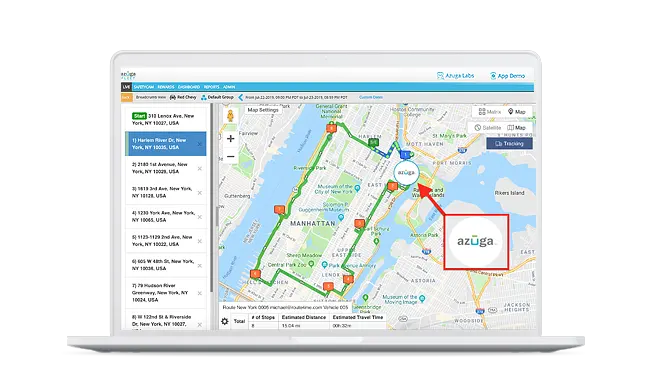
The Best Approach to Truck Fleet Management
Improve Visibility, Safety,and Cost Management with Our Truck Fleet Management Software

Optimize Your Fleet with Solutions that Work
A Tailored Solution for Fleet Optimization
Not all trucking fleet management systems are created equal. Most systems you find will offer ELD compliance and some sort of vehicle diagnostics. Below you’ll find what features Azuga offers for your trucking fleet:
- Route optimization
- Maintenance scheduling and alerts
- Idle time reports
- Fuel consumption reports
- Fuel card integration
- Hours of service logging
- Driver behavior reports and incentive program
- Engine diagnostics
- Asset tracking
- Geofencing
- Utilization optimization
Improve safety. Gain accountability.
Count on the GPS fleet management software that's built for safety.
Limit distractions.
Add DriveSafe and block smartphone distractions—such as texting, calling, and app use—when the vehicle is in motion.
Put fleet safety first.
Take advantage of information—such as speeding, hard braking, cell phone distractions, and service warnings—to keep both drivers and vehicles performing at their best.
Put diagnostics to work.
In today’s world, data and analytics are crucial tools for any business. With our diagnostics, valuable information is captured every time your fleet is dispatched. Use it to maximize efficiency, reduce operating costs, and reward top drivers.
Log and tag trips.
When a driver uses FleetMobile, data is captured from every vehicle he or she drives, creating a comprehensive trip log. Trips can also be tagged as business or personal, allowing you to separate out the daily lunch run from work-related trips.
Tire Pressure Monitoring
Tire Pressure Monitoring System (TPMS) in your vehicle monitors the tire's air pressure continuously and alerts drivers when the pressure varies from the recommended level. TPMS is primarily designed for safety purposes. Underinflated or overinflated tires lead to a less stable ride and a higher risk of blowouts, making driving unsafe. Whenever this occurs, it will trigger an alert to the driver that the tire (or tires) needs to be inflated to the appropriate level.










